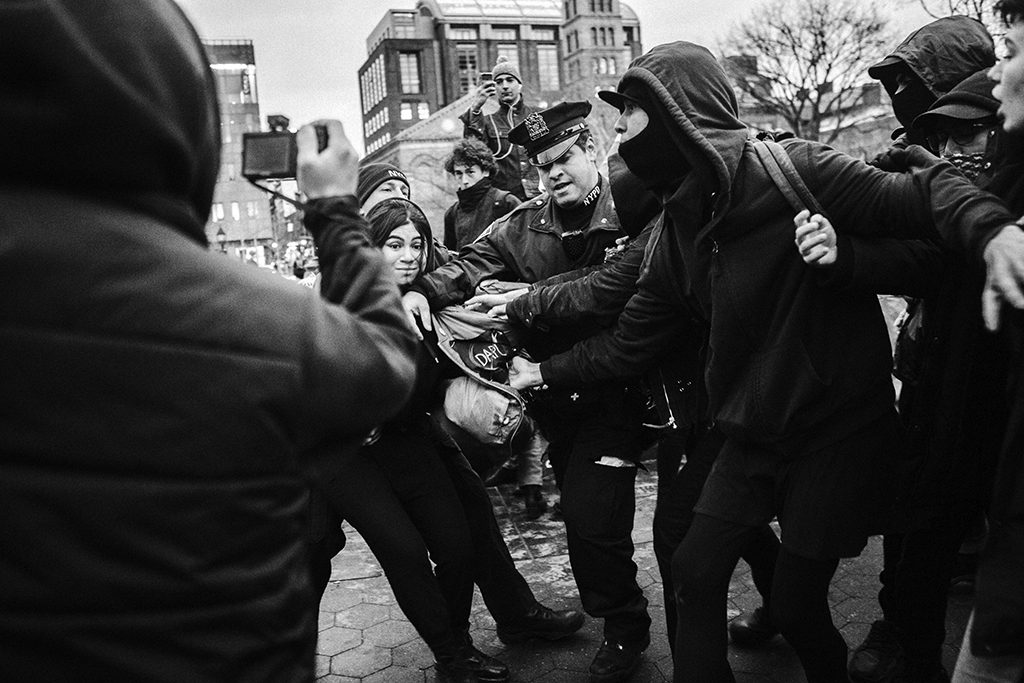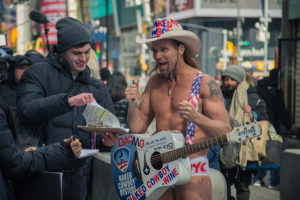
Through the lens at CMA Convention
At the College Media Association national convention in New York City, 22 students participated in the on-site photography class competition — the ever-popular Shoot-out.
THE WINNERS
- First place — Siddharth Gaulee, University of Louisiana—Monroe, Christopher Mapp, adviser
- Second place — Pooja Pasupula, University of North Carolina—Charlotte, Wayne Maikranz, adviser
- Third place — Hunter Crenian, University of Miami, Tsitsi Wakhisi, adviser
- Honorable mention and class favorite — Hunter Crenian, University of Miami, Tsitsi Wakhisi, adviser
- Honorable mention — Charlene Pan, Rice University, Kelly Callaway, adviser
As part of the contest, participants had to document “one moment in time.” The students had about two days to submit one or two images with captions.
“Your assignment is to stop time,” the assignment read. “With all the hustle and bustle of the city that never sleeps, we want you to capture one ordinary moment in time in the lives of the people in the city. Turn turn the ordinary into the extraordinary. Play with light. Find creative angles. Shoot moments. This is your chance to meet someone new. Get to know them. Tell their story in a new environment.”
Students also spent time with New York Daily News Photographer Todd Maisel critiquing and reviewing their images in light of the assignment.

“Doing the Shoot-out helped me learn the importance of being extroverted, even when being behind a camera,” Connor Lorber, a junior at University of Portland (Nancy Copic, adviser), said. “It’s easy to get just any shot, but to tell the full story behind the shot, you need context, and that often requires talking to new people. It was definitely worth my time. I love competition, and having an abstract goal in a contest was a great way of getting me to go out of my comfort zone and try to get more creative.”
Similarly, Siddharth Gaulee, who placed first in the contest, said, “I learned how to approach a random person in New York and start a conversation and get them comfortable enough to take a photo.”
Gaulee, a student at the University of Louisiana — Monroe (Christopher Mapp, advsier) also cited the benefits of the critique that is required as part of the Shoot-out.
Gaulee said, “I got some feedback so had never heard of before. It was definitely worth my time and honestly my favorite part of the conference.”
Raquel Hamner of Anne Arundel Community College (Arnold, Maryland) (Sharon O’Malley, adviser) also said she appreciated the critiques.
“I’m glad I was able to get feedback from other photographers and get an idea of how other photographers saw New York that weekend,” Hamner said. “I love critiques like that. I definitely learned a lot from the experience.”
Bradley Wilson, an associate professor at Midwestern State University in Texas, Kevin Kleine, a lecturer in communication at Berry College in Georgia, and Todd Maisel, a photographer with the New York Daily News, coordinated the on-site class and competition.


Excellent article Jeff, accompanying images too. Youve certainly set yourself s tough task with the definition of Street Photography. Like many of my own photos that never see the light of day, the lines between Documentary and Street, are blurred! Street can be more about surrealism, leaving the viewer to decide whats going on, but often its simply documented. That said I suppose theres more room for creativity with Street because its not crucial to record the absolute facts. Photojournalism is totally different Id say, it is defined by the very nature of the images produced. Robert Capa wouldnt spring to mind as a Street Photographer. In my opinion he was a Photojournalist and defined that genre. He was a gambler, someone once said that he was a poker player who took photos on the side. To carry out the kind of work he did I suppose youd need to be a gambler, of course it cost him his life eventually. Maybe he could be the example that sets the genres apart?